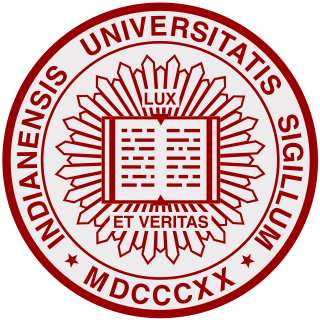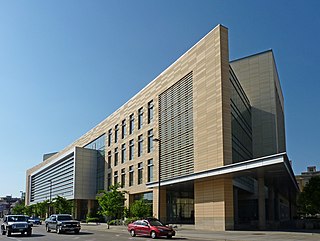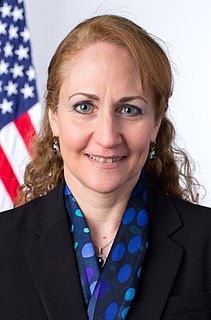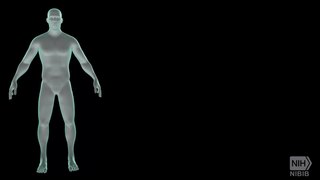
The State University of New York at Albany, commonly referred to as University at Albany, SUNY Albany or UAlbany, is a public research university with campuses in the New York cities of Albany and Rensselaer and the Town of Guilderland, United States. Founded in 1844, it carries out undergraduate and graduate education, research, and service. It is a part of the State University of New York (SUNY) system.

Indiana University–Purdue University Indianapolis (IUPUI) is a public research university in Indianapolis, Indiana. A core campus of Indiana University that also offers Purdue University degrees, it is the result of a merger in 1969 of the Purdue Indianapolis Extension Center (1946) and Indiana University Indianapolis (1916). Located along the White River and Fall Creek, it sits upon a peninsula adjacent to Downtown Indianapolis.

Scripps Research, previously known as The Scripps Research Institute is a nonprofit American medical research facility that focuses on research and education in the biomedical sciences. Headquartered in La Jolla, California with a sister facility in Jupiter, Florida, the institute has 250 laboratories employing 2,400 scientists, technicians, graduate students, and administrative and other staff, making it the largest private, non-profit biomedical research organization in the United States and among the largest in the world.

The Biocomplexity Institute of Virginia Tech is a research organization specializing in bioinformatics, computational biology, and systems biology. The Institute has more than 250 personnel, including over 50 tenured and research faculty. Research at the Institute involves collaboration in diverse disciplines such as mathematics, computer science, biology, plant pathology, biochemistry, systems biology, statistics, economics, synthetic biology and medicine. The institute develops -omic and bioinformatic tools and databases that can be applied to the study of human, animal and plant diseases as well as the discovery of new vaccine, drug and diagnostic targets.

The Wisconsin Alumni Research Foundation is the independent nonprofit technology transfer organization serving the University of Wisconsin–Madison and Morgridge Institute for Research. It provides significant research support, granting tens of millions of dollars to the university each year and contributing to the university's "margin of excellence".

Friedrich–Alexander University Erlangen–Nürnberg is a public research university in the cities of Erlangen and Nuremberg in Bavaria, Germany. The name Friedrich–Alexander comes from the university's first founder Friedrich, Margrave of Brandenburg-Bayreuth, and its benefactor Christian Frederick Charles Alexander, Margrave of Brandenburg-Ansbach.
The University of Wisconsin–Extension (UW–Extension) is the outreach arm of the University of Wisconsin System. It provides statewide access to university system's resources and research to Wisconsin residents of all ages. Fulfilling the promise of the Wisconsin Idea, UW–Extension extends the boundaries of the university to the boundaries of the state through its four divisions of Cooperative Extension, Continuing and Online Education, Business and Entrepreneurship, and Public Broadcasting. It was created as a division of UW–Madison in 1907, and took its new form in 1965 as an autonomous unit. The abolition of UW-Extension as a separate entity was begun July 1, 2018; phase 1 will last through June 30, 2019.
Washington University in St. Louis has a broad array of centers for particular studies and research institutes. The following summary of many of these is organized by general field of inquiry.
John Duncan Wiley is a faculty member and former chancellor of the University of Wisconsin–Madison. Wiley was named the 28th Chancellor of the University on November 10, 2000, and assumed office on January 1, 2001. He stepped down as chancellor and returned to the faculty on September 1, 2008. From November 1, 2008, through November 2011, he served as interim director of the Wisconsin Institute for Discovery.
Scientific teaching is a pedagogical approach used in undergraduate science classrooms whereby teaching and learning is approached with the same rigor as science itself.

The University of Wisconsin Carbone Cancer Center (UWCCC) holds the unique distinction of being the only comprehensive cancer center in Wisconsin, as designated by the National Cancer Institute (NCI), the lead federal agency for cancer research. It is an integral part of both the University of Wisconsin (UW) and the University of Wisconsin Hospital and Clinics. It is located in Madison, Wisconsin.

Constance Steinkuehler (Squire) is an American professor of Informatics at the University of California–Irvine. She previously taught at the University of Wisconsin-Madison before taking public service leave, from 2011-2012, to work as a Senior Policy Analyst in the Office of Science and Technology Policy (OSTP) at the White House Executive Office, where she advised on policy matters about video games and learning.
The Center for 21st Century Studies (C21) is an interdisciplinary postdoctoral research institute and University of Wisconsin Center of Excellence located on the University of Wisconsin–Milwaukee (UWM) campus. C21 is dedicated to supporting the study of contemporary culture within the arts, humanities, and social sciences of all fields, and it also sponsors and supports the creation and deployment of 21st-century modes of research, analysis, and representation.
The Wisconsin Energy Institute serves as a hub for clean energy research for the University of Wisconsin-Madison campus and greater Midwestern region, and houses the Great Lakes Bioenergy Research Center and the Center for Renewable Energy Systems, along with research space for the Nelson Institute for Environmental Studies.
The Great Lakes Bioenergy Research Center (GLBRC) is one of three bioenergy research centers established in 2007 by the U.S. Department of Energy. It is led by the University of Wisconsin-Madison with Michigan State University as a primary partner. GLBRC works with academic, federal, and private sector bodies to help create the "pipeline" between biomass production and its final conversion to fuel. The key focus being on efficiency and sustainability.
{{Infobox scientist | name = Professor Melanie Bahlo | marriage = 2008 | position = Associate Professor and Statistical Genetics Lab head, Bioinformatics Division, The Walter and Eliza Hall Institute for Medical Research, Parkville, VIC | nationality = Australian | birth_place = Australia | high_school = Albury High School | higher Education= [[BSc Hons and PhD in population genetics from Monash University ]] | achievements = }}














